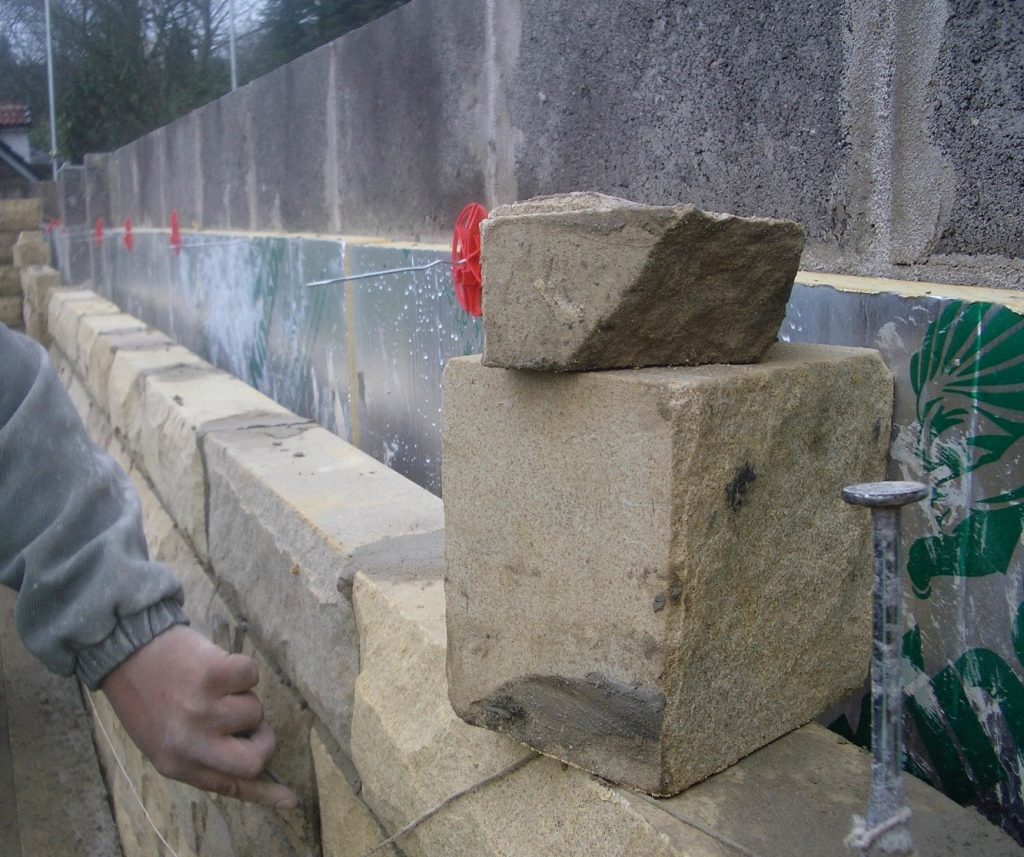Traditional masonry construction is the construction method of choice for new homes in England and Wales. This method is ingrained in our national psyche and most people appear to feel more comfortable putting their faith and money in bricks and mortar.
We’ll have a look at masonry construction and the advantages and disadvantages of choosing it as the method of construction for your self build.

Traditional masonry construction refers to houses built in block and brick. Although brick is used countrywide as an outer skin or ‘facing material’, it is often substituted with local quarried stone or a reconstituted replica.
Despite the use of the term ‘traditional’, masonry construction has incorporated many modern developments and has come a long way since the days of solid stone walls. Improvements in technical design, materials and accessory products have enhanced the performance of these structures significantly in terms of structural integrity, thermal efficiency and moisture protection. Progress has led to developments such as thin joint systems with Aircrete blocks.
The Construction Process
Following excavation and installation of foundations, bricklayers erect cavity walls that consist of an inner and outer skin.
The inner skin is the main structural element, which supports internal floors and the roof structure. It is constructed using concrete blocks laid on beds of sand and cement mortar.
The outer skin is the first line of protection against the elements and provides the aesthetic element to the structure. It is constructed using brick, stone or block work, which can take a number of finishes. The two skins are connected by steel wall ties and separated by a cavity that is partially or fully filled with insulation.
Internal floors can be constructed using timber joists, composite timber I beams, or one of the precast concrete systems available. The roof is usually traditional cut timber or prefabricated truss construction.
Once the roof is completed and the windows and doors are fitted, the building is watertight the internal trades can get underway. The internal face of the blockwork can take a range of finishes including ‘dot and dab’ plasterboard and wet plaster.
Various details are required around openings and other parts of the structure in order to maintain structural integrity and to prevent water penetration and heat loss.
If you are interested in these and other technical construction details Roy Chudley and Roger Greeno’s Building Construction Handbook is a great source of information and drawings.
Let’s have a look at some of the pros and cons of masonry construction.
 Advantages
Advantages
- It is a flexible system in both design and construction.
- Depending on your house design and the materials specified, masonry construction can be one of the more cost effective of all the build methods.
- As the most common form of house construction, there are plenty of tradesmen and specialist knowledge available to complete your project.
- A proven track record means it is accepted and understood from designersand builders to lenders, insurers and warranty providers.
- Materials are readily available from local builders merchants.
- Materials are often manufactured and sourced locally (Traditional Housing Bureau).
- Easy to modify or extend.
- Good levels of sound insulation are achieved, which can be improved by using precast concrete floors.
- Masonry provides good fire protection.
- Masonry materials are strong, durable and long lasting, spreading their impact (Traditional Housing Bureau).
- Good thermal performance. Masonry materials have a high thermal mass, which is their ability to absorb and store heat. In the summer this keeps the building cool and in the winter the heat stored during the day is slowly released back into the house at night leading to a more constant, comfortable environment. This effect is improved if plaster is applied directly to blockwork in lieu of dot and dab plasterboard.
- When the building has reached the end of its useful lifespan, bricks and blocks are recyclable.
 Disadvantages
Disadvantages
- On-site construction means that progress and your programme of works can be affected by adverse weather conditions.
- Materials need to be stored on site and protected from the weather before they are incorporated into the building structure.
- New work needs to be protected from the elements.
- On site construction is labour intensive.
 More Information on Traditional Masonry Construction
More Information on Traditional Masonry Construction
Have a look at the Modern Masonry Alliance an organisation dedicated to explaining and promoting the benefits of masonry solutions to the construction industry and it’s clients.
The Housebuilders Bible is always an excellent source of information for all self builders and house builders alike regardless of construction method.
As masonry construction is the main method of construction used in the UK it is often the benchmark by which other construction methods are compared in terms of cost, time, quality, performance and sustainability.
Despite a few issues, it still offers some great advantages and attractive characteristics that might fit the requirements of your self build project.
Have a look at the other methods available and through the rest of our site for tips on design, management and money matters before deciding which method will be best for you.
Return to House Construction Methods
Return to Home Page from Masonry Construction
